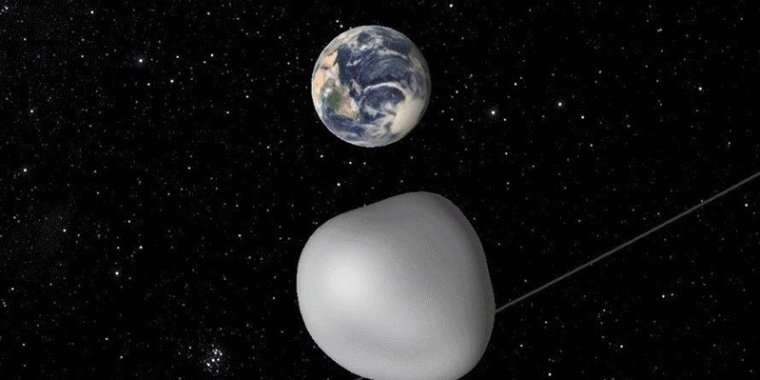| News / Science News |
Biggest Asteroid Ever Detected Flies Past Earth
The largest asteroid ever recorded has passed Earth at a distance of 145 million miles, giving scientists the opportunity to learn more about its physical characteristics.

Biggest asteroid ever detected flies past Earth. ![]()
The 2.7-mile wide astral body, called Florence, will not approach the planet this close again until 2500.
It is classified as a “potentially hazardous” asteroid by the International Astronomical Union’s Minor Planet Centre, although orbital calculations have found there is no risk of the asteroid colliding with the Earth.
Florence is the largest asteroid to pass by our planet this close since the NASA program to detect and track near-Earth asteroids began.
The relatively close proximity of Florence provides astronomers with a rare chance to take measurements. Radar scientists will capture high-resolution images that could show its surface features. Little is currently known about Florence's properties.
During early September, the asteroid is so close to Earth that it is visible even with small telescopes as it passes through the constellations of Piscis Austrinus, Capricornus, Aquarius and Delphinus.
Until September 8, astronomers will be using the Goldstone Solar System Radar in California and the National Science Foundation’s Arecibo Observatory in Puerto Rico to reveal more about it.
Radar images discovered that Florence has two small moons. The moons are estimated to be around 100-300 meters in diameter.
It is fairly spherical, has a ridge along its equator and at least one large crater. The radar images confirmed the asteroid rotates once every 2.4 hours.
Research also confirmed that the asteroid is only the third triple asteroid (with two orbiting moons) known out of more than 16,400 near-Earth examples discovered so far. Scientists are hoping to use the data collected to calculate the total mass and density of the asteroid.
Florence was discovered in 1981 by astronomer Schelte "Bobby" Bus at Australia's Siding Spring Observatory and named after Florence Nightingale, the nursing pioneer. (Tasnim News Agency)
YOU MAY ALSO LIKE



